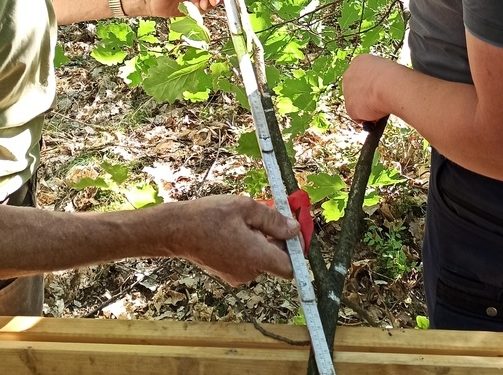For acceptable estimation data, practical forest growth simulators require regular verification of their accuracy and improvements based on real growth data and new findings. The need to adapt the calculation algorithms initially results from new stand conditions such as Forest conversion stands. Furthermore, the timber production goals and the silvicultural concepts are changing. In forest stands with increasing structure and heterogeneity, it is not possible to extrapolate from the size of an average trunk to the whole stand. In addition, there are variable site and environmental factors, such as climatic site drift, which in turn change the tree allometries and the site-growth relationship as a whole.
On the basis of ongoing forest conversion experiments in the North Saxon lowlands, a harmonized and uniform set of real data is to be compiled, which enables the unresolved modeling of allometric relationships for small dimensional deciduous trees, i.e. the future forest generation. This affects the current course setting for the further development of the stock in the upcoming pole age. However, the extremely complex topic with the special focus on young deciduous trees in two-layer stands is not currently being intensively worked on by any forestry research institution, so this will be a focus of yield research in the coming years. The primary goal is to replace the previously applied extrapolation of the biomass functions of older deciduous trees to younger stands with an ecologically based model parameterized by intensive measurements: The method of randomized branch sampling used here also enables the deriavtion of the leaf area index (LAI), which is very important for water balance modelling, starting from the individual trunk. This is intended to derive reliable and robust allometric functions for determining the individual LAI.
re Nährstoffgehalte untersucht. Zur Bewertung des Standort-Einflusses werden zusätzlich Individuen auf den besser wasser- und nährstoffversorgten Böden des Mittelsächsischen Löß- und Hügellandes vergleichend herangezogen. Auf den nordsächsischen Raum beschränkt bleibt die Herleitung allometrischer Beziehungen (Volumen, Biomasse, Nährstoffzusammensetzung) für zwei weitere Baumarten: junge Rot-Eichen und Gemeine Birken.
Partner
Staatsbetrieb Sachsenforst


Project Funding
Sächsisches Staatsministerium für Energie, Klimaschutz, Umwelt und Landwirtschaft (SMEKUL)



